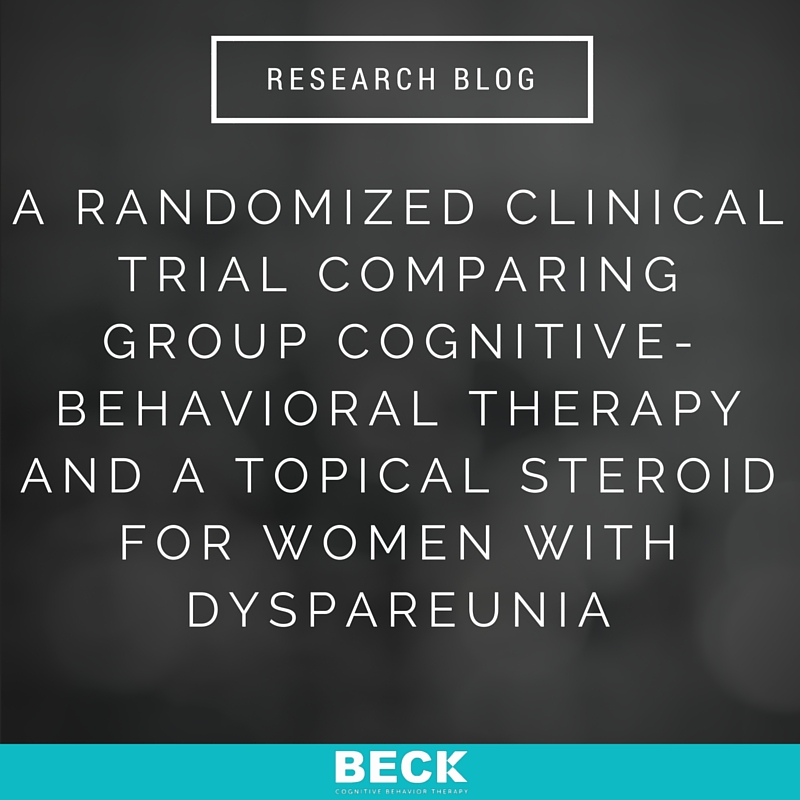Abstract
OBJECTIVE:
This 13-week randomized clinical trial aimed to compare group cognitive-behavioral therapy (GCBT) and a topical steroid in the treatment of provoked vestibulodynia, the most common form of dyspareunia.
METHOD:

Participants were 97 women randomly assigned to 1 of 2 treatment conditions and assessed at pretreatment, posttreatment and 6-month follow-up via structured interviews and standard questionnaires pertaining to pain (McGill Pain Questionnaire, 11-point numerical rating scale of pain during intercourse), sexual function (Female Sexual Function Index, intercourse frequency), psychological adjustment (Pain Catastrophizing Scale, Painful Intercourse Self-Efficacy Scale), treatment satisfaction, and participant global ratings of improvements in pain and sexuality.
RESULTS:
Intent-to-treat multilevel and covariance analyses showed that both groups reported statistically significant reductions in pain from baseline to posttreatment and 6-month follow-up, although the GCBT group showed significantly more pain reduction at 6-month follow-up on the McGill Pain Questionnaire. The 2 groups significantly improved on measures of psychological adjustment, and the GCBT group had significantly greater reductions in pain catastrophizing at posttreatment. Both groups’ sexual function significantly improved from baseline to posttreatment and 6-month follow-up, and the GCBT group was doing significantly better at the 6-month follow-up. Treatment satisfaction was significantly higher in the GCBT group, as were self-reported improvements in pain and sexuality.
CONCLUSIONS:
Findings suggest that GCBT may yield a positive impact on more dimensions of dyspareunia than a topical steroid, and support its recommendation as a first-line treatment for provoked vestibulodynia.
Bergeron, S., Khalife S., Dupuis, M. J., & McDuff P. (January 2016) A Randomized Clinical Trial Comparing Group Cognitive-Behavioral Therapy and a Topical Steroid for Women With Dyspareunia. Journal of Clinical and Counseling Psychology.